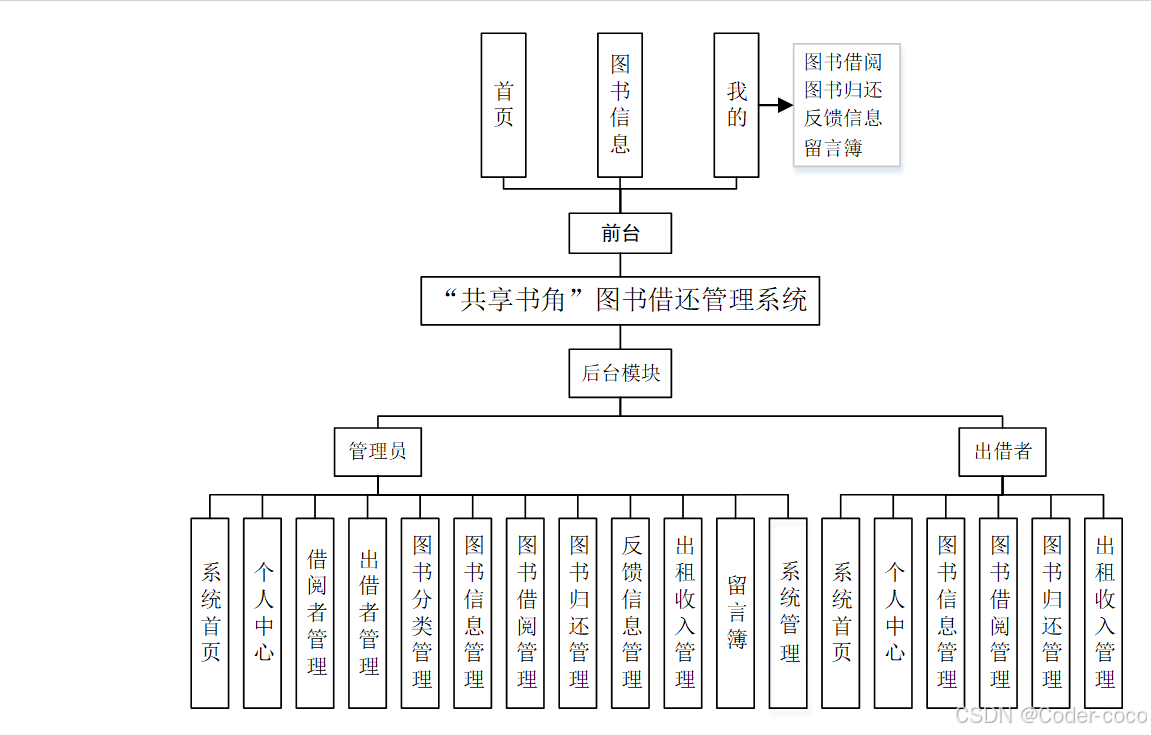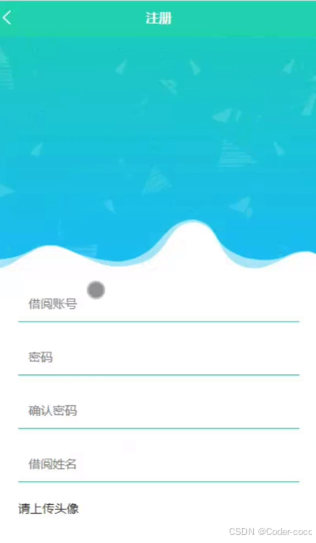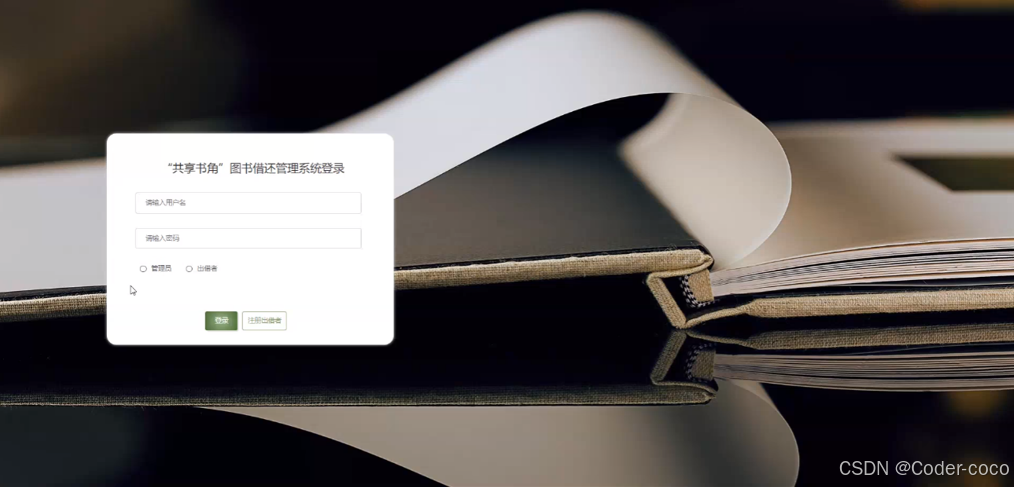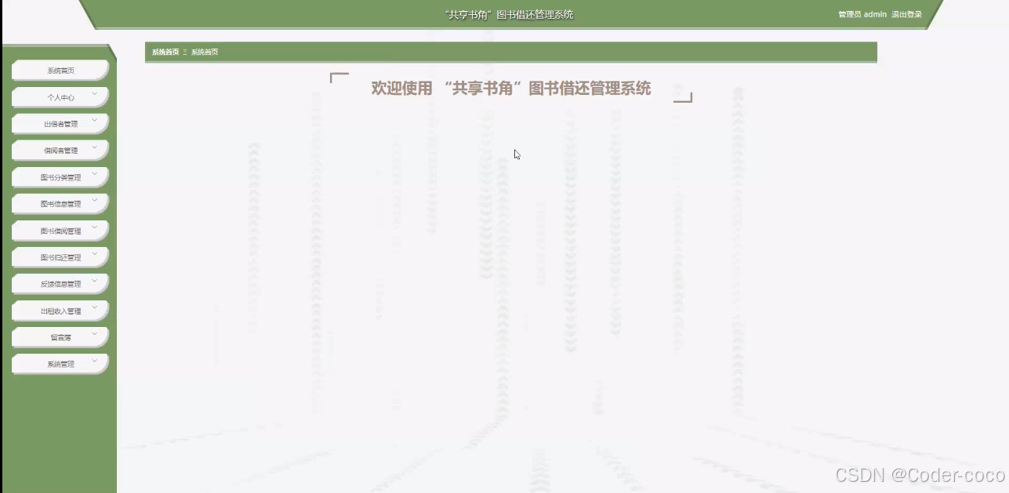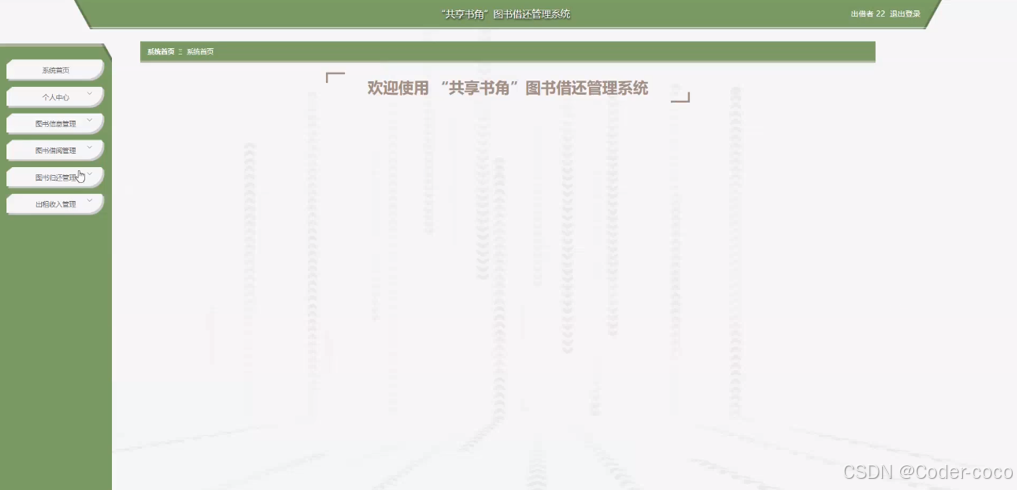目录
博主介绍:✌️大厂码农|毕设布道师,阿里云开发社区乘风者计划专家博主,CSDN平台Java领域优质创作者,专注于大学生项目实战开发、讲解和毕业答疑辅导。✌️
主要项目:小程序、SpringBoot、SSM、Vue、Html、Jsp、Nodejs等设计与开发。
🍅文末获取源码联系🍅
基于SprinBoot+vue的图书借还管理系统
一、前言
通过对图书借还管理流程的分析,分析了其功能性和非功能性需求,设计了基于微信小程序的“共享书角”图书借还管理系统,该系统包括管理员,出借者和借阅者三部分。同时还能为借阅者提供一个方便实用的“共享书角”图书借还管理系统,使得借阅者能够及时地找到合适自己的图书借还信息。管理员在使用本系统时,可以通过后台管理员界面管理借阅者的信息,也可以发布系统公告,让借阅者及时了解图书借还信息。这样,借阅者就可以安全高效地找到图书借还信息。
关键词:微信小程序;图书借还;springboot;MySQL数据库
二、系统设计
系统功能结构图
三、系统功能设计
5.1小程序端实现
5.1.1注册登录界面的实现
第一次使用本小程序的使用者,首先是要进行注册,点击“注册”,然后就会进入到注册的页面里面,将借阅者信息录入注册表,确认信息正确后,系统才会进入登录界面,借阅者登录成功后可使用本小程序所提供的所有功能。注册界面如图5-1所示。
图5-1 注册界面
5.1.2 小程序首页功能的实现
小程序首页是借阅者注册登录后进入的第一个界面,在这里,人们能够看到小程序的导航条,内容包括首页,图书信息,我的等。小程序首页界面如图5-3所示。
图5-3 小程序首页界面图
5.1.3借阅者功能
借阅者登录成功后,点击“我的”进入我的页面,在我的页面可以对图书借阅,图书归还,反馈信息,留言簿等进行详细操作。借阅者功能界面如图5-5所示。
图5-5借阅者功能界面图
5.2 后台功能的实现
后台登录,在登录页面选择需要登录的角色,在通过填写用户名和密码等信息进行登录操作,如图5-6所示。
图5-6后台登录界面图
5.2.1管理员模块实现
管理员登录进入小程序可以查看到系统首页,个人中心,出借者管理,借阅者管理,图书分类管理,图书信息管理,图书借阅管理,图书归还管理,反馈信息管理,出租收入管理,留言簿,系统管理等功能进行详细操作,如图5-7所示。
图5-7管理员功能界面图
5.2.2出借者模块实现
出借者登录进入小程序可以查看到系统首页,个人中心,图书信息管理,图书借阅管理,图书归还管理,出租收入管理等功能进行详细操作,如图5-13所示。
图5-13出借者功能界面图
四、数据库设计
图书资讯实体如图4-2所示。
图4-2图书资讯实体属性图
数据库表的设计,如下表:
表4-1:token表
| 字段名称 | 类型 | 长度 | 字段说明 | 主键 | 默认值 |
| id | bigint | 主键 | 主键 | ||
| userid | bigint | 用户id | |||
| username | varchar | 100 | 用户名 | ||
| tablename | varchar | 100 | 表名 | ||
| role | varchar | 100 | 角色 | ||
| token | varchar | 200 | 密码 | ||
| addtime | timestamp | 新增时间 | CURRENT_TIMESTAMP | ||
| expiratedtime | timestamp | 过期时间 | CURRENT_TIMESTAMP |
五、核心代码
package com.service.impl;
import com.utils.StringUtil;
import com.service.DictionaryService;
import com.utils.ClazzDiff;
import org.springframework.beans.BeanUtils;
import org.springframework.beans.factory.annotation.Autowired;
import org.springframework.stereotype.Service;
import java.lang.reflect.Field;
import java.util.*;
import com.baomidou.mybatisplus.plugins.Page;
import com.baomidou.mybatisplus.service.impl.ServiceImpl;
import org.springframework.transaction.annotation.Transactional;
import com.utils.PageUtils;
import com.utils.Query;
import org.springframework.web.context.ContextLoader;
import javax.servlet.ServletContext;
import javax.servlet.http.HttpServletRequest;
import org.springframework.lang.Nullable;
import org.springframework.util.Assert;
import com.dao.FangwuDao;
import com.entity.FangwuEntity;
import com.service.FangwuService;
import com.entity.view.FangwuView;
@Service("fangwuService")
@Transactional
public class FangwuServiceImpl extends ServiceImpl<FangwuDao, FangwuEntity> implements FangwuService {
@Override
public PageUtils queryPage(Map<String,Object> params) {
Page<FangwuView> page =new Query<FangwuView>(params).getPage();
page.setRecords(baseMapper.selectListView(page,params));
return new PageUtils(page);
}
}
package com.service.impl;
import com.utils.StringUtil;
import com.service.DictionaryService;
import com.utils.ClazzDiff;
import org.springframework.beans.BeanUtils;
import org.springframework.beans.factory.annotation.Autowired;
import org.springframework.stereotype.Service;
import java.lang.reflect.Field;
import java.util.*;
import com.baomidou.mybatisplus.plugins.Page;
import com.baomidou.mybatisplus.service.impl.ServiceImpl;
import org.springframework.transaction.annotation.Transactional;
import com.utils.PageUtils;
import com.utils.Query;
import org.springframework.web.context.ContextLoader;
import javax.servlet.ServletContext;
import javax.servlet.http.HttpServletRequest;
import org.springframework.lang.Nullable;
import org.springframework.util.Assert;
import com.dao.FeiyongDao;
import com.entity.FeiyongEntity;
import com.service.FeiyongService;
import com.entity.view.FeiyongView;
@Service("feiyongService")
@Transactional
public class FeiyongServiceImpl extends ServiceImpl<FeiyongDao, FeiyongEntity> implements FeiyongService {
@Override
public PageUtils queryPage(Map<String,Object> params) {
Page<FeiyongView> page =new Query<FeiyongView>(params).getPage();
page.setRecords(baseMapper.selectListView(page,params));
return new PageUtils(page);
}
}
六、论文参考
七、最新计算机毕设选题推荐
八、源码获取:
大家点赞、收藏、关注、评论啦 、👇🏻获取联系方式在文章末尾👇🏻
